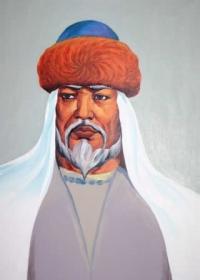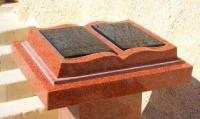Вы здесь
Sufi Beket-Ata.


Tours to mosque Beket ata.
“I've known rivers:
I've known rivers ancient as the world and older than the flow of human blood in human veins. My soul has grown deep like the rivers”
Langston Hughes.
Travel on religious monuments Mangistau.
It is a sacred place, which ranks high along with the tombs ol Mohammed and Khodja Akhmed Yassawi. Throughout the year, pilgrims from all over the country come in flocks to bare their souls here.
They maintain that even mentioning Beket-Ata's name in a conversation can prevent a misfortune, and a prayer in the mosque does wonders. His great grandfather was Eset-batyr, a well-known hero (batyr) of western Kazakhstan.
At the age of XIV, Beket-ata went to worship at the tomb of Shopan-ata and, on the third night of his stay, received a visit from the saint who told him to go to Khiva and study Islam. At the age of 40 he returned to Mangistau, where he first taught children to write, then started to heal people and act as a judge in conflicts.
His preaching of good morals spread among the Adai people but at the same time, like his great-grandfather, he acted as a military strategist in the wars against the Kalmyks (Zhungars).
He died at the age of 63, but the legend goes that his body remained alive in the tomb for 100 years longer, and his hair and beard were regularly cut by his disciples. There are four mosques dedicated to Beket-ata in western Kazakhstan: the mosque of Ak-Mechet in Kulsary, the mosque Baishatyr on the Ustyurt Plateau, the underground mosque Beket-Ata in Oglandy and the underground mosque Beket-Ata in Beineu.
Local people say that the four mosques correspond to the four seasonal camps of the Adai shepherds. Like Mohammed, Beket-Ata died at the age of 63, and was buried in the underground mosque at Oglandy, one of the four mosques he is said to have built in the region.
Every day, busloads of pilgrims come to the Beket-Ata cave complex. On Islamic holidays the sanctuary and its surrounding areas have to cope with a vast number of visitors. The retreat was redecorated for Beket-Ata's 250th birthday; roads were built, outdoor facilities such as toilets put up, and a guesthouse for travelers.
Beket-Ata is known in the Muslim world as a foreteller and prophet, as well as a healer, and a person, who was familiar with the laws of physics, mathematics, and astronomy. According to the legend, Beket-Ata lived in the second half of the XVIII century.
He was born in 1750 near the settlement of Kulsary, the Atyrau region. At the age of 14 he came to the tomb of a wise man Shopan-Ata, whom he respected, to bow to his remains and receive the blessings.
On the third night, Shopan-Ata gave him an order to study. So, the young boy left for the remote city of Khiva, where he ground away at his studies in the madrasah. Having reached the age of 40, he became the Sufi, and began teaching children.
Upon completion of his studies he returned home and built 4 mosques: the one in Kulsary is called the Ak-Mechet, the second was built in the chalky rocks, 20 kilometers away from the settlement of Beineu, the third one - in Baishatyr, on the Ustyurt plateau, and the fourth underground mosque is cut off in the chalky rocks mass in the Oglandy valley. Having become the Sufi, he founded the Sufi school under the underground mosque in Oglandy.
Later on, the mosque became a scientific center, an observatory under the open sky. Due to his significant contribution to the Sufi science, Beket -Ata was elected the Pir by the Sufis and granted an honorary staff. He died at the age of 63 and was buried in the underground mosque in Oglandy, Mangystau.
Authority and photos by:
«Monuments of the Central Asia». The author of M. Khahsimov. Publishing house, Saga, 2001







